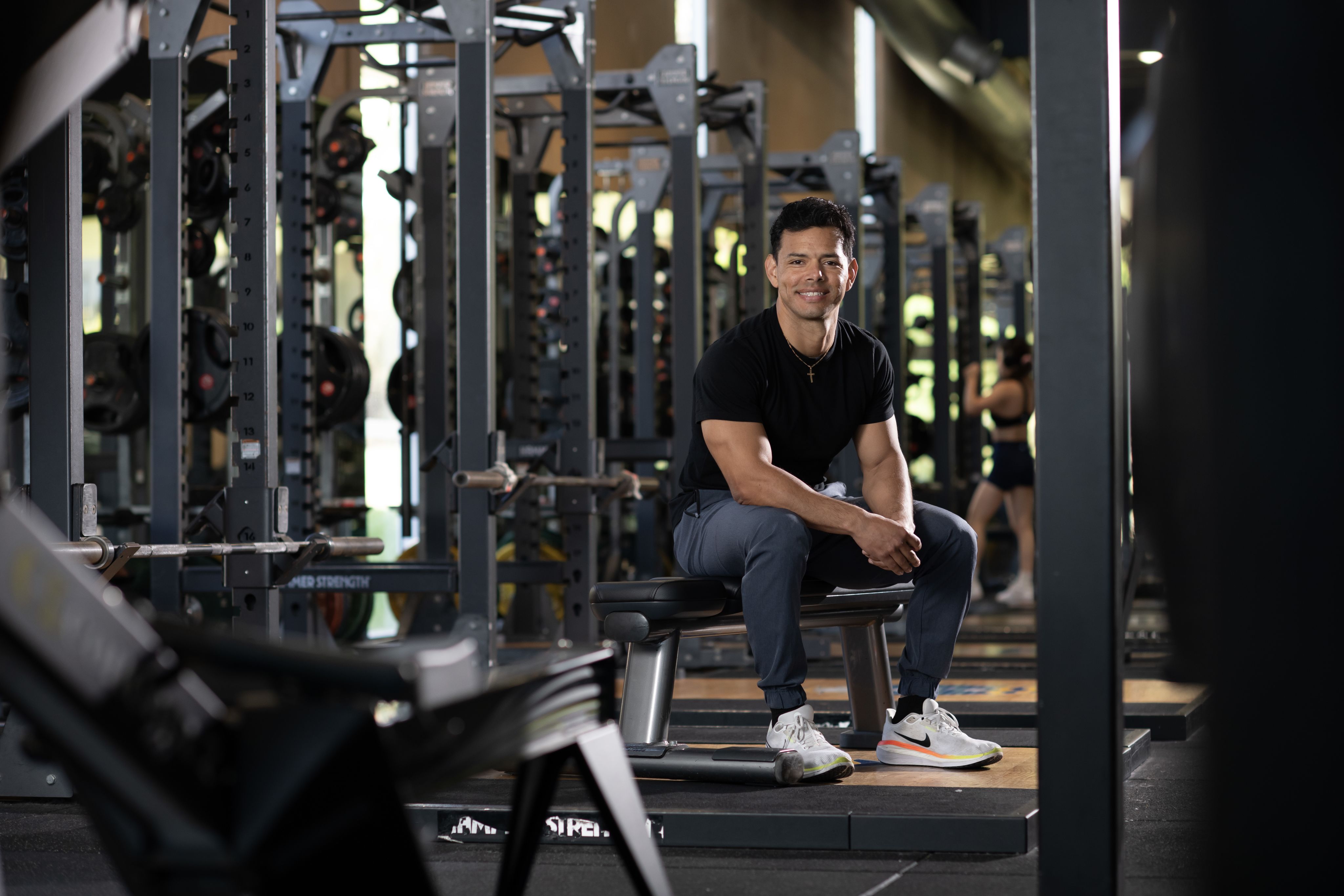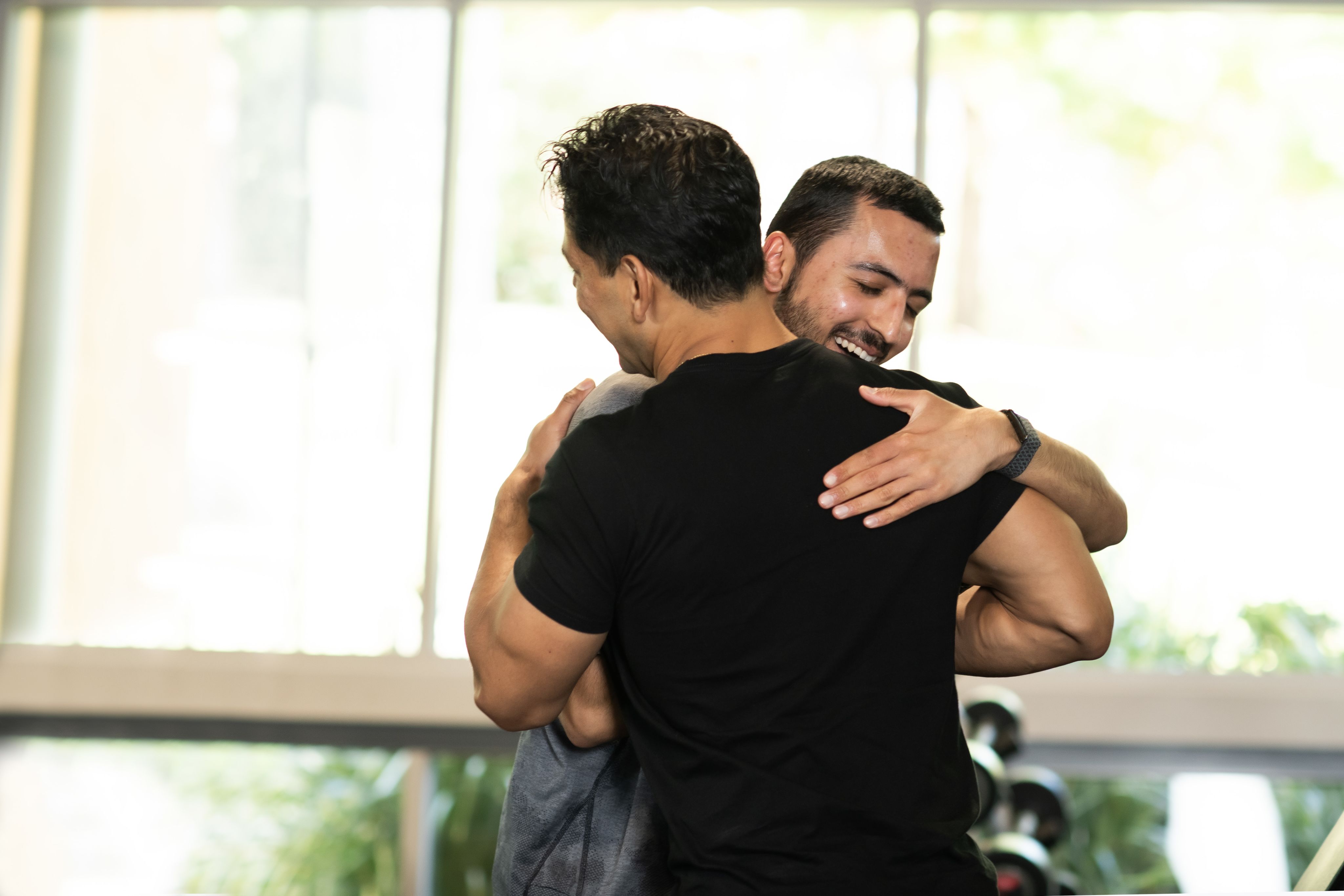
Samuel Gil is a Master of Healthcare Innovations graduate who aims to transform mental health care by integrating exercise as a clinically-recognised, insurance-funded treatment.
Sitting on the porch of a California fire station, Samuel Gil found himself at a crossroads. His years as a firefighter had revealed a deeper calling — not in emergency response, but in prevention. As an all-risk firefighter with Cal Fire, Samuel responded to destructive bushfires, structural fires, car crashes, hazardous incidents and medical emergencies where he assisted people with various health issues.
“We were involved in these mass wildland firefights on a yearly basis and, while devastating, they have always happened and will continue to happen after me,” he says.
“But I also assisted people with chronic health conditions that resulted from their lifestyle such as obesity, heart conditions and addiction.
“I realised I wanted to impact people’s lives in a way that wouldn’t just temporarily help, but give solutions to live a healthy life that could positively impact their families too.”
This lightbulb moment eventually became the foundation of his capstone project — Bridging the Gap: Health Insurance Coverage of Fitness Programs for Depression and Anxiety in Adults. Completed as part of Bond University’s Master of Healthcare Innovations, it challenges policymakers to rethink what mental health care looks like. His work argues that fitness is not merely a lifestyle choice — it’s a therapeutic tool with clinically proven outcomes, and it deserves to be recognised and funded as part of mainstream mental health treatment.
From first responder to system reformer
Samuel’s journey into healthcare began with a desire to help. His athleticism and drive to serve made firefighting a natural fit. But over time, he felt limited to reactive care. He decided to pursue his other passion: exercise. He earned a Bachelor of Science in Kinesiology with an emphasis in Exercise Science at San Francisco State University before launching the first CrossFit program in Northern California conducted entirely in Spanish.
“People still message me saying how much it changed their lives,” he says.
That experience gave him a taste of creating change.
“It’s a big part of why I pursued the Master of Healthcare Innovations,” he says. “I had passion, but I needed the tools to navigate systems and communicate with organisations effectively.”
Samuel worked with The Bridge Restoration, a transitional residential program for men in recovery from substance abuse or homelessness. He also gained experience in healthcare settings as a recreation therapist within a hospital-based psychiatric unit.
“I saw a lot of allopathic treatments, which often masked symptoms rather than solving the core of the issues. And I realised there were people who never learned a healthy outlet,” he says.
“Exercise can remove physical limitations, make people more confident in their abilities, create an outlet to manage stress, and encourage communication and community.
“It’s a treatment that’s non-invasive, has minimal harmful consequences and high positive outcomes.”
His time in these settings shaped his belief that mental health treatment must go beyond medication.

A bold call to action
Samuel’s capstone project explored how health insurance could, and should, cover fitness as a mental health intervention. His scoping review extracted data from studies of insurance-covered exercise interventions for young adults with depression or anxiety. He chose to focus on young people because depression, anxiety, and behavioural disorders are among the leading causes of illness and disability in adolescents globally. In Australia, mental health conditions are the leading serious illness for the 15–34 age group, growing from 10 per cent in 2013 to 22 per cent in 2021.
"If left unaddressed, these conditions extend into adulthood, impairing both physical and mental health and limiting opportunities to lead fulfilling lives," he says.
"This is also reflected back home in California, with increasing rates of substance abuse and homelessness."
Samuel examined studies from the UK, Germany, Switzerland, Australia, and the United States which evaluated insurance-covered exercise programs for depression and anxiety.
The findings were clear.
“Exercise is often more effective than psychotherapy or medication, especially for young adults,” he says. “Over 50 per cent of young adults don’t respond to traditional treatments.”
The data also showed exercise interventions were cost-effective and scalable.
“The issue isn’t whether it works, it’s whether systems are willing to change,” Samuel says.
“The issue isn’t whether it
works, it’s whether systems
are willing to change."

A bold call to action
Samuel’s capstone project explored how health insurance could, and should, cover fitness as a mental health intervention.
His scoping review extracted data from studies of insurance-covered exercise interventions for young adults with depression or anxiety. He chose to focus on young people due to a significant rise in depression and anxiety amongst that demographic post pandemic. For example, a United Kingdom study reported anxiety and depression diagnoses more than doubled among 16 to 24-year-olds from 2000 to 2020, while in the United States, depression prevalence among adolescents and adults increased by approximately 60 per cent between 2013 and 2023.
“There are more young people trying to manage their mental health and if we’re not solving the issue correctly, they can turn to harmful things which, in the worst case, can be suicide,” Samuel says.
Samuel examined studies from the UK, Germany, Switzerland, Australia, and the United States which evaluated insurance-covered exercise programs for depression and anxiety.
The findings were clear.
“Exercise is often more effective than psychotherapy or medication, especially for young adults,” he says. “Over 50 per cent of young adults don’t respond to traditional treatments.”
The data also showed exercise interventions were cost-effective and scalable.
“The issue isn’t whether it works, it’s whether systems are willing to change."

Passion as a compass
In September 2025, Samuel was accepted into a Doctor of Philosophy (PhD) in Healthcare Innovation at Bond to continue bridging the gap between research and real-world practice.
He hopes to commence his program at a later date, to help integrate exercise into mainstream mental health care, particularly for young adults with depression and anxiety.
“My PhD will focus on evaluating the feasibility and cost-effectiveness of reimbursable fitness programs, while also developing a credentialing framework for exercise professionals to work confidently in mental health settings,” he says.
“The goal is to make exercise a sustainable, evidence-based option in both clinical care and health policy.”
For Samuel, passion is the driving force to pursue his goals.
“I think you have to know your ‘why’,” he says.
“Make sure it’s something you love, something that doesn’t feel like work.”
Samuel’s ‘why’ stems from his identity as a Mexican American. As his community back home struggles through adversity, he strives to make mental health a greater consideration.
“We’re good at taking care of one another but we need to make our own health a priority too,” he says.
“And while we hold on to a lot of traditional values, we need to acknowledge change and that mental health isn’t just a case of learning to toughen up.”
He also hopes to create representation for his community as a healthcare leader.
Success, for him, is simple: “Making the greatest impact to the greatest amount of people.”

If you're in Australia and need someone to talk to, call:
- Lifeline on 13 11 14
- Kids Helpline on 1800 551 800
- MensLine Australia on 1300 789 978
- Suicide Call Back Service on 1300 659 467
- Beyond Blue on 1300 22 46 36
- Headspace on 1800 650 890
- QLife on 1800 184 527
Published Wednesday, 24 September, 2025.
Original thinking direct to your inbox

Stories from Bond